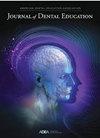Dental and allied dental students, staff, faculty, and administrators’ cultural inclusivity considerations: Results of the 2022 ADEA Climate Study
Abstract
Objectives
Feeling welcome in an educational environment is crucial to achievement and well-being. The objectives of this climate study were to assess perceptions of how inclusive the dental and allied dental educational environment were, how good the chances were to reach one's potential, how social relationships and biases/inequities in relation to policies were experienced, and how support for others from diverse backgrounds was observed. The relationships between these constructs of interest were also explored.
Methods
A total of 10,281 students, 2596 staff, 4026 faculty, 359 administrators, and 443 administrators with faculty appointments from 58 US and eight Canadian dental schools, and 180 US and 12 Canadian allied dental education programs responded to the climate survey.
Results
The majority of participants agreed/agreed strongly that their school/program fostered a sense of community (69.2%) and promoted the appreciation of diversity (79.6%). Staff had the lowest mean responses, and administrators with faculty appointments had the highest (five-point scale with 5 = agree strongly: 3.54 vs. 3.97; p < 0.001/3.91 vs. 4.30; p < 0.001). This pattern was repeated in responses concerning whether career trajectories were progressing as anticipated (means: 2.62 vs. 3.23; p < 0.001) and career aspirations increased (3.18 vs. 3.81; p < 0.001). Students agreed they could get assistance from faculty, staff, and students (means = 3.97/3.95/4.25). Students reported the highest number of experienced biases/inequities in relation to six policies (mean = 1.34) and staff reported the highest number of biases/inequities related to 12 appointment policies (mean = 2.32). About a third did not agree/agree strongly that their school/program was supportive of transgender/gender nonconfirming persons (37.1%), emotionally, cognitively and/or physically disabled persons (29.8%), or persons from lesbian/gay/bisexual/questioning/other backgrounds (29.2%). The more inclusive they considered the environment to be, the more they believed they could reach their potential (r = 0.78; p < 0.001) and had positive relationships (r = 0.77; p < 0.001)), and the less they experienced biases/inequities (r = −0.17; p < 0.001).
Conclusions
These findings should alert administrators that students, faculty, and staff experience their environment less inclusively than others do. Curricular educational interventions and staff/faculty development programs are needed concerning interactions with persons from diverse backgrounds. The more inclusive environments are, the stronger the belief that one's potential can be reached.

 求助内容:
求助内容: 应助结果提醒方式:
应助结果提醒方式:


